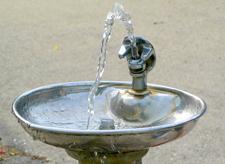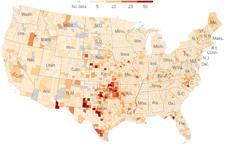Assessing health impacts of impaired water quality in California
Summary:
Access to safe drinking water for communities across California is a growing challenge. In addition, little is known about the scope of waterborne disease across the state. This project aims to close this gap by analyzing trends in violations of drinking water quality standards in California and determining the health impacts of impaired drinking water. Emphasis will be placed on identifying the types of communities bearing disproportionate burdens of violations and health consequences to better target assistance.
Investigator:
Maura Allaire
Assistant Professor in Urban Planning & Public Policy, School of Social Ecology
UC Irvine
Project description:
Ensuring safe drinking water for communities across California represents an emerging challenge. Growing awareness of inadequate access, especially for disadvantaged communities, has elevated water quality issues to the state-level. Currently, over one million Californians are estimated to lack access to safe water. Yet, the full scope of this challenge is unknown.
Substantial investment is needed to correct this situation – approximately $30-160 million annually. While state assistance is available to struggling communities, targeting assistance can be challenging due to limited information on water-related disease burden.
The first phase of this study aimed to: 1) analyze trends in violations of drinking water quality standards in California and 2) determine the health impacts of impaired drinking water. An overview of the results of that work can be found on The Confluence, the blog of the California Institute for Water Resources.
For the second phase, actionable information will be created by: 1) analyzing trends in violations across the state and identifying systems with frequent and severe non-compliance and 2) determining the magnitude of health impacts and how these are distributed across demographic groups.
This work represents a substantial contribution to the literature as well as state-level policy. Systematic assessment of violations and health impacts could inform the prioritization of systems for state-level assistance. Importantly, this study seeks to provide insight into waterborne disease across the state of California, which is not regularly considered in assistance prioritization decisions due to data limitations.
By taking stock of the current situation, this work can advance understanding of cost-effective solutions for underserved communities. At present, communities must undertake a lengthy administrative process before being placed on a state priority list, which can be hard for small systems. Addressing water security issues in the near-term is critical, since climate change could exacerbate drinking water vulnerabilities in rural, disadvantaged communities.


